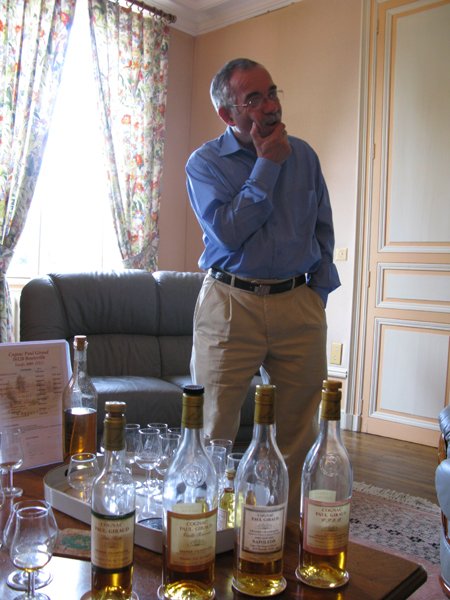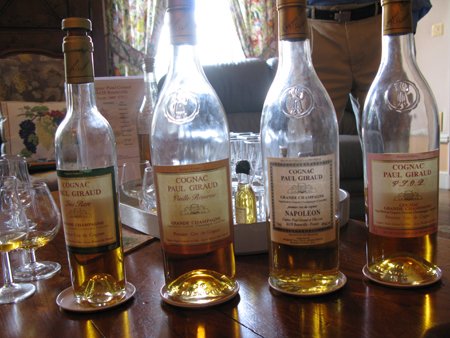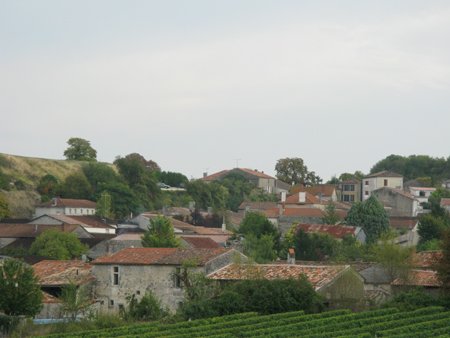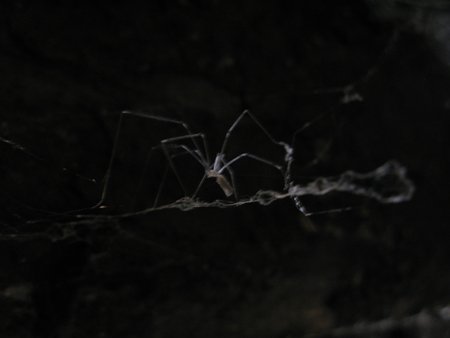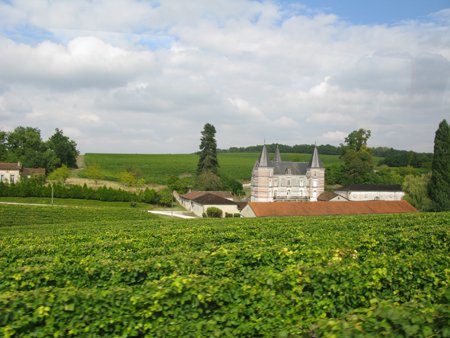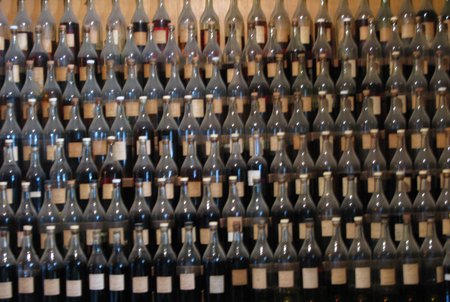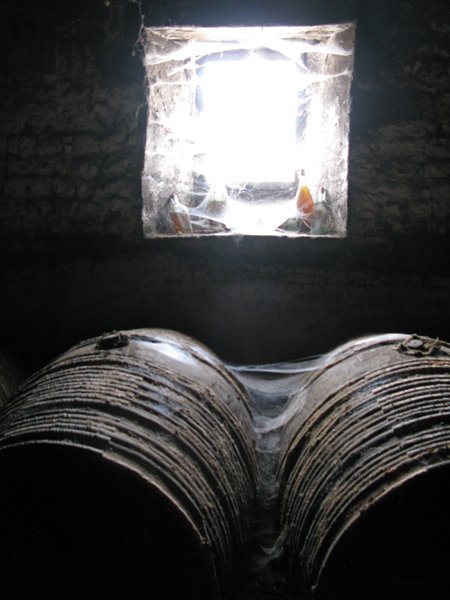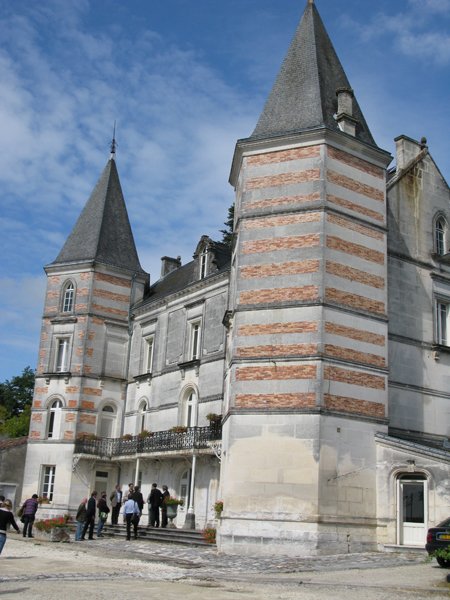My final visit in the Cognac region of France was to the house of Paul Giraud- quite literally his house. In my brief visit we first learned about Giraud's philsoophy: while other houses try to use blending to get a round and multi-faceted flavor profile, Giraud tries to emphasize particular flavors in each bottling.
I found a commonality in all the Giraud cognacs though, a strawberry rhubarb creaminess. The Naopleon bottling is meant to emphasize the grape flower aromas, whereas the Vielle Reseve (labeled as XO in the US) emphasizes fruitiness with flavors that change from fresh to dried plum as the spirit warms up in the glass. The Tres Rare bottling, which is delicious, 49 years old and emphasizes spice on the palate.
Paul Giraud is located in the beautiful little town of Bouteville. There the brand (it's all estate-grown grapes in their products) owns 40 hectares, and they actually harvest about half of their grapes by hand instead of machine.
Some of the aging cellars are located right next to a stream, keeping them cool and humid year-round. In this cellar like all of them in Cognac, we saw spiders all around. They love spiders in cognac cellars (surely you've seen webs in my other pictures) as they eat the bugs that otherwise may eat through the wood in the barrels.
You know, maybe I should start using that excuse not to clean my apartment- I'm just trying to protect the furniture.
